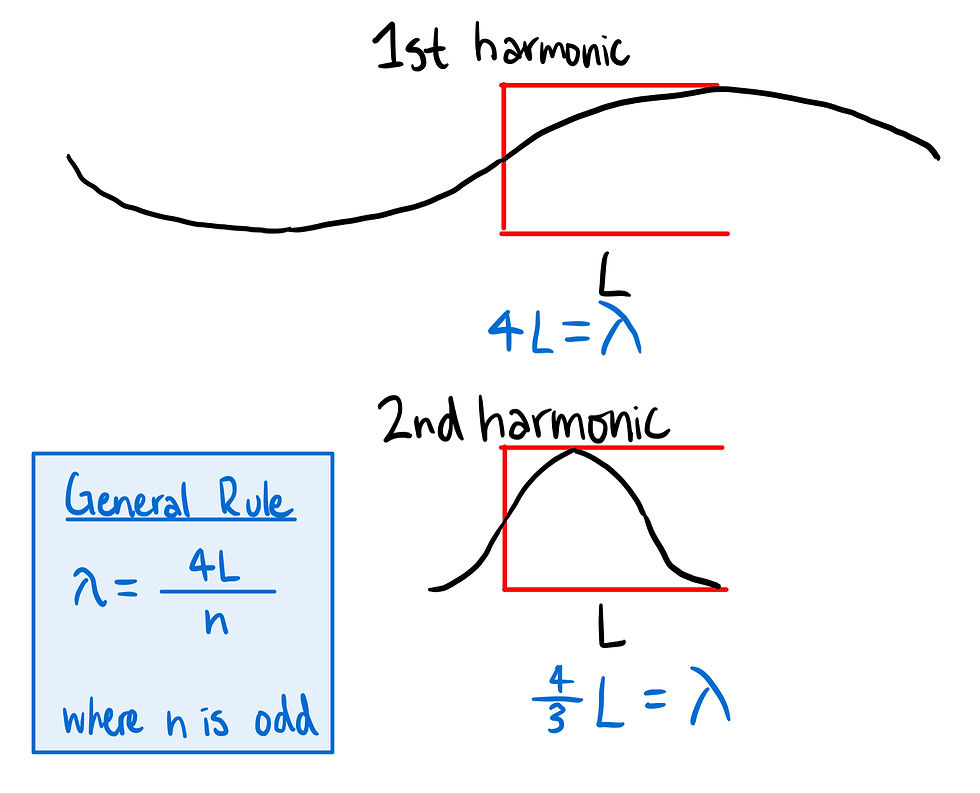PhysicsBowl 2017 Q41
- keshprad

- Jun 4, 2020
- 2 min read
41) For this question, we are given an instance of Young's diffraction experiment. You can read more about this experiment here. We need to find the distance between the first and third bright spots. We can use this equation to determine the distance at which a bright/dark fringe lies.

First off, the problem asks us to find the distance between the 3rd and 1st bright fringe, which would be located respectively at m = 0, and m = 2. Since we want the change in distance between m = 0 and m = 2, and since λ, D, and d are constant, we can rewrite the above equation.

We know that Δm = 2 - 0 = 0.
Next, let's figure out λ. For the PhysicsBowl exam, something you need to be familiar with is the electromagnetic wave spectrum including the wavelengths for specific colors on the visible light spectrum. Here is a link where you can find an image mapping with the EM wave spectrum.
We are specified that there is a pure red light that shines through. A red/reddish-orange color will have a wavelength in the range of 650-750 nanometers.

We are already given D, the distance between the slits and screen, as 5 meters. Finally, we would need to find the slit difference d. We already know that there are 1200 lines per centimeter, which is the same as 1200 slits per centimeter. This means we can find the slit difference by taking the reciprocal.

At this point, we have gathered enough information and have found the value of all necessary properties. We can plug all this into our equation.

Choice C, 1 meter, is the best representation for the distance between the first and third bright fringe.
Answer: C




Comments